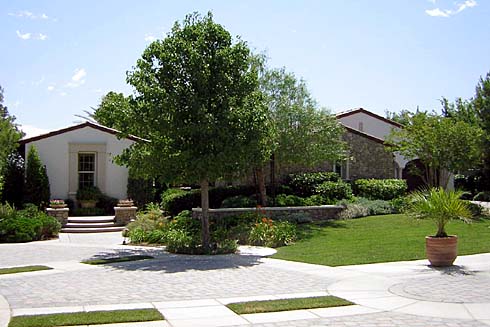LOCKED-IN INTEREST RATE
Understanding Locked-In Interest Rates in Real Estate
In the realm of real estate financing, the concept of a 'locked-in' interest rate holds profound significance for both borrowers and lenders. Essentially, a locked-in interest rate represents the commitment made by a lender to extend a loan at a specified interest rate at the time of loan application. This commitment, legally binding in most cases, offers a degree of certainty amid the fluctuating landscape of interest rates.
Legal Commitment and Contingencies
When a lender provides a locked-in interest rate, it signifies a legal commitment to honor the specified rate at the time of application. However, it's crucial to recognize that there may be qualifications or contingencies that allow the lender to charge a higher rate. These qualifications or contingencies are typically outlined in the loan agreement, and borrowers should carefully review and understand them.
Home Loans vs. Income Property Loans
On home loans, a lock-in is customarily provided for 1% of the amount borrowed, although it's often offered free of charge. This nominal fee, when applicable, secures the borrower's access to a specific interest rate, shielding them from potential rate increases during the loan processing period.
Conversely, income property loans may require a commitment fee from the loan applicant in exchange for a locked-in interest rate. This fee serves to solidify the lender's commitment and compensates for the potential risks and administrative complexities associated with income-generating properties.
Significance for Borrowers and Lenders
For borrowers, a locked-in interest rate offers stability and predictability, shielding them from market fluctuations and providing a clear understanding of their future financial obligations. This certainty can be invaluable, especially in a rising interest rate environment.
Lenders, on the other hand, leverage locked-in interest rates to attract and retain borrowers while managing their own exposure to interest rate risks. By offering locked-in rates, lenders can instill confidence in borrowers and streamline the loan application process.
Lenders, on the other hand, leverage locked-in interest rates to attract and retain borrowers while managing their own exposure to interest rate risks. By offering locked-in rates, lenders can instill confidence in borrowers and streamline the loan application process.
Conclusion
In conclusion, the concept of a locked-in interest rate represents a crucial element in real estate financing, providing a measure of stability and predictability in an otherwise dynamic and fluctuating market. Understanding the implications, qualifications, and fees associated with locked-in rates empowers borrowers to make informed decisions when navigating the loan application process, ultimately contributing to the prudent management of real estate financing.
Can you provide examples of contingencies that may allow a lender to charge a higher rate?
Could you explain how locked-in interest rates impact the real estate market?
What are some potential risks for lenders when offering locked-in interest rates?
MORE REAL ESTATE TERMS
A, B, C, D, E, F, G, H, I, J, K, L, M, N, O, P, Q, R, S, T, U, V, W, X, Y, Z
Featured New Home

Featured Mortgage Brokers
- INDEPENDENT BANK, MT PLEASANT, MI
319 E BROADWAY ST
MT PLEASANT, MI 48858 - WELLS FARGO BANK NA, DES MOINES, IA
1 HOME CAMPUS # 4801-196
DES MOINES, IA 50328 - GENERATION MORTGAGE COMPANY, HILO, HI
1257 KILAUEA AVE STE 30
HILO, HI 96720 - TOP FLITE FINANCIAL INC, FORT LAUDERDALE, FL
33 NE 2ND ST STE 100
FORT LAUDERDALE, FL 33301 - AMERICAN FINANCIAL NETWORK INC, MURRIETA, CA
24910 WASHINGTON AVE
MURRIETA, CA 92562